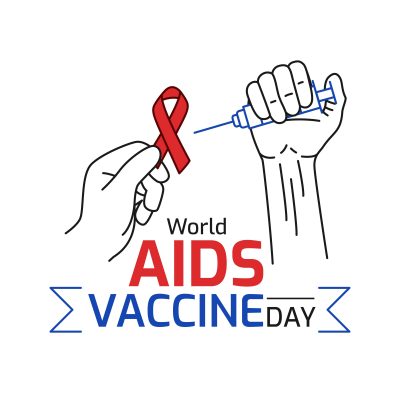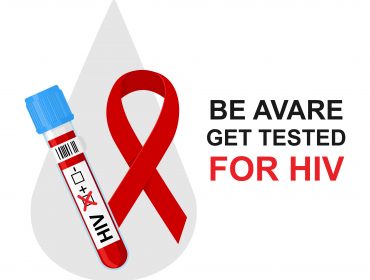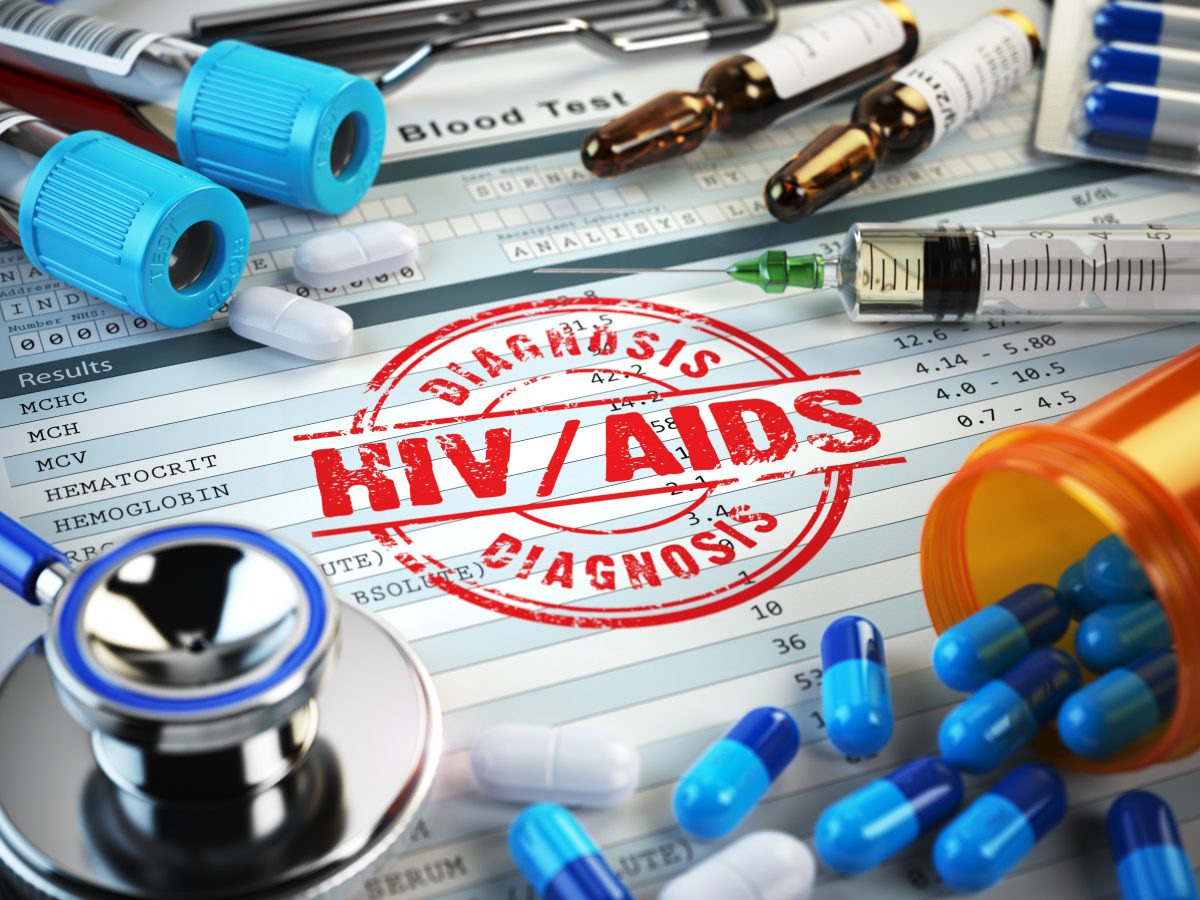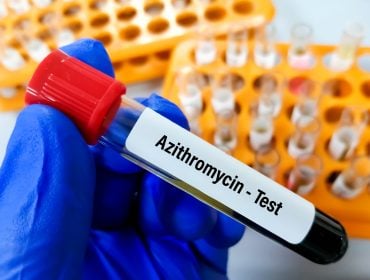HIV Vaccine
Is There A Vaccine For HIV?
Human Immunodeficiency Virus (HIV), and the disease it causes, Acquired Immune Deficiency Syndrome (AIDS), continue to be a significant global health issue. Since the early 1980s, when the virus was first identified, HIV/AIDS has claimed the lives of more than 32 million people worldwide, with approximately 38 million currently living with the virus.
The impact of HIV/AIDS extends beyond the health sector, affecting economies and societies at large. It disproportionately affects vulnerable populations, exacerbating issues of inequality and poverty. Despite advancements in antiretroviral therapies that have significantly improved the quality of life for those affected, HIV & AIDS remains a leading cause of death in several parts of the world.
In this context, the development of an HIV vaccine is of paramount importance. An effective vaccine would protect against new infections and potentially halt the virus’s progression in those already infected. Creating an HIV vaccine represents one of the most pressing and challenging goals in public health today. This article will examine the complexities of developing such a vaccine, the current state of research, and the potential implications of this groundbreaking advancement.
Understanding HIV/AIDS
Human Immunodeficiency Virus (HIV) is a virus that assaults the body’s immune system, specifically the CD4 cells, often called T cells. Over time, HIV can destroy some of these cells that the body can’t resist infections and disease, leading to the final stage of HIV infection, Acquired Immune Deficiency Syndrome (AIDS).
HIV is transmitted via contact with certain body fluids from a person with HIV. These fluids include blood, semen, vaginal and rectal fluids, and breast milk. The virus is most commonly transmitted through sexual intercourse without protection, sharing of injection drug equipment, or from mother to child during pregnancy, birth, or breastfeeding.
Is there a vaccine for HIV? There is no cure for HIV, but it can be controlled through antiretroviral therapy (ART). ART involves taking HIV medicines daily to prevent the virus from replicating. This helps protect the immune system and reduces the risk of transmitting the virus to others. As for prevention, strategies include using condoms correctly and consistently, pre-exposure prophylaxis (PrEP), post-exposure prophylaxis (PEP), and harm reduction services for individuals that inject narcotics. Despite these treatments and preventive measures, HIV remains a significant global health issue, highlighting the crucial need for an effective vaccine. One main side effect is an HIV rash, which you can read about on our dedicated page.
The Challenge of Developing an HIV Vaccine
Developing a vaccine for HIV is a complex process, fraught with unique challenges that set it apart from the development of other vaccines.
One of the primary reasons why creating a vaccine for HIV is so complex lies in the global variability of the virus. HIV exists as multiple strains worldwide, each with its own unique characteristics. This diversity makes it challenging to develop a ‘one-size-fits-all’ vaccine that can effectively combat all strains of the virus.
Another significant hurdle in the path to an HIV vaccine is the lack of a validated animal model for testing. Researchers in most vaccine development processes test potential vaccines on animals before moving on to human trials. However, the lack of an animal model that can accurately mimic the human response to HIV significantly hampers the research process.
Moreover, HIV has the unique ability to integrate itself into the host’s DNA. This integration allows the virus to hide from the immune system and limits the types of vaccine platforms that can be used. Traditional methods, such as using live attenuated viruses, are not viable options in the case of HIV, making the development process even more challenging.
The frequent mutation of the HIV also poses a significant challenge. These constant changes make HIV a moving target that’s hard to pin down, resulting in a situation where a vaccine that works today might not work tomorrow.
In comparison, the development of the COVID-19 vaccine was relatively straightforward. The SARS-CoV-2 virus, responsible for COVID-19, does not have the same level of global variability as HIV. Moreover, it does not integrate into the host’s DNA, and while it does mutate, the mutation rate is slower than that of HIV. Additionally, there was a clear animal model for initial testing, and existing vaccine platforms were applicable.
Similarly, the flu vaccine, while needing annual updates due to the mutating nature of influenza viruses, relies on tried-and-tested methods of vaccine development. The influenza virus does not integrate into the host DNA, and there are well-established animal models for testing.
In conclusion, the uniqueness of HIV – its global variability, ability to integrate into host DNA, lack of a suitable animal model, and high mutation rate – makes the development of a vaccine a complex and ongoing challenge.
Current Research and Developments

HIV vaccine research is a global endeavor with numerous organizations, institutions, and scientists working tirelessly to develop a viable solution.
One of the key players in this field is the International AIDS Vaccine Initiative (IAVI), which has been focusing on developing B-cell immunogens. These are designed to stimulate B cells of the immune system, which produce antibodies to fight off pathogens like HIV. IAVI’s research is currently in the preclinical stage and shows promise.
Another significant contributor is the Scripps Research Institute. They have made a notable breakthrough with a new HIV vaccine design, which has shown a significantly improved ability to neutralize the virus in preclinical tests. This vaccine design involves trimming the sugars on the virus’s surface that usually shield it from the immune system, allowing the body to mount a more potent response.
The Fred Hutchinson Cancer Research Center is also making strides with its promising HIV vaccine candidate. This approach involves stimulating the production of broadly neutralizing antibodies, which can fight multiple strains of HIV. This research is still in its early stages but offers a potential pathway to an effective vaccine.
The Mosaico trial, one of the most recent large-scale HIV vaccine trials, was conducted by the National Institute of Allergy and Infectious Diseases (NIAID). Although this trial did not yield a successful vaccine, it provided valuable insights that will guide future research efforts.
Despite these promising developments, there are currently no HIV vaccines in clinical efficacy trials, according to Dan Barouch, a renowned researcher in the field. However, with continuous advancements in our understanding of HIV and the immune system, researchers remain optimistic about the future of HIV vaccine development.
Promising Advances
The quest for an HIV vaccine has seen several promising advances that could revolutionize the fight against this global pandemic.
One of the most notable advancements is the development of the nanoparticle vaccine known as eOD-GT8 60-mer. In its first-in-human trials, this vaccine successfully expanded the production of a rare type of immune cell needed to start the process of generating antibodies against HIV. This is a significant step forward, indicating that the vaccine can stimulate the immune system to produce the necessary antibodies to slow the virus.
Another promising approach is mRNA technology, similar to the technology used in the COVID-19 vaccines developed by Pfizer-BioNTech and Moderna. The mRNA-based HIV vaccines, which began human trials in early 2022, are designed to teach cells how to produce proteins that activate an immune response against HIV. This technology offers a new pathway for HIV vaccine development, potentially expediting the process considerably.
In terms of effectiveness, while it’s too early to make definitive predictions, these advances have shown potential in preclinical and early human trials. The eOD-GT8 60-mer vaccine has demonstrated its ability to stimulate the necessary immune response, and the mRNA-based vaccines have shown promise in their initial attempts. However, their effectiveness will only become clear as they progress through further stages of clinical trials.
While the road to an HIV vaccine has been long and challenging, these recent developments offer hope and highlight the innovative approaches in this crucial research area.
Potential Roadblocks and Challenges
Despite the promising advances, several potential roadblocks and challenges could hinder the development of an effective HIV vaccine.
One major scientific hurdle is our incomplete understanding of the correlates of immune protection against HIV. Identifying these correlates is crucial for developing a vaccine that can provide broad and durable protection.
Another challenge stems from HIV’s unusual characteristics, such as its rapid replication, furious mutation rate, and ability to evade the immune system. These features make it challenging to develop a vaccine that can keep up with the constantly changing virus.
In addition to these scientific challenges, there are also ethical considerations that must be addressed. For instance, conducting clinical trials involves testing potential vaccines on human subjects, which raises issues of informed consent, risk-benefit analysis, and participant selection. It’s critical to ensure that these trials are conducted ethically and that participants fully understand the risks involved.
Moreover, once a vaccine is developed, questions of distribution arise. It’s essential to have a fair and equitable distribution plan in place to ensure that the vaccine reaches those who need it most. This includes addressing barriers to access and ensuring that vulnerable populations are not left out.
In conclusion, while the path to an effective HIV vaccine is fraught with scientific and ethical challenges, it’s a journey that holds the promise of a significant breakthrough in the fight against HIV/AIDS.

The Impact of an HIV Vaccine
Developing an effective HIV vaccine would profoundly impact global health, potentially ushering in a new era in the fight against HIV/AIDS.
Firstly, an HIV vaccine could drastically reduce the number of new infections. Even a partially effective vaccine could decrease the incidence rate, slowing down or even halting the spread of the virus. This reduction would alleviate the burden on healthcare systems worldwide, particularly in regions with high infection rates.
Secondly, the vaccine could significantly lower the number of AIDS-related deaths. The vaccine could save millions of lives by preventing new infections and potentially halting the virus’s progression in those already infected.
Furthermore, the availability of an HIV vaccine could also lead to substantial economic benefits. By reducing the number of people living with HIV, it would lessen the financial burden associated with treatment costs and productivity losses. It could also help mitigate the socio-economic disparities exacerbated by the HIV/AIDS pandemic, particularly in low- and middle-income countries.
Finally, an HIV vaccine could transform global health by becoming a potent tool against infectious diseases. It could inspire and inform research into vaccines for other complex diseases, paving the way for future breakthroughs.
In conclusion, while developing an HIV vaccine presents numerous challenges, its potential impact on global health is immense. It represents a beacon of hope in the ongoing battle against HIV/AIDS. Is there a vaccine for HIV? No, but there is hope. Check out our resource guide to better recognize HIV symptoms. We have dedicated pages for HIV symptoms in men, as well as HIV signs in women. We want to be your resource for all things HIV and HIV testing.
HIV Vaccines
The journey toward an effective HIV vaccine is complex and challenging, marked by scientific hurdles and ethical considerations. Despite the challenges, incredible progress has been made, with promising advances such as the eOD-GT8 60-mer nanoparticle vaccine and mRNA-based vaccines offering hope for the future.
The development of an HIV vaccine represents one of the most pressing and challenging goals in public health today. Still, its potential impact on global health is profound. It could drastically reduce the number of new infections, lower the number of AIDS-related deaths, bring substantial economic benefits, and transform the global health landscape.
While the road ahead remains uncertain and fraught with challenges, the tireless efforts of researchers worldwide are bringing us closer to this pivotal breakthrough. The potential of an HIV vaccine not only signifies a significant stride in the fight against HIV/AIDS but also symbolizes a beacon of hope for millions of people worldwide.
In conclusion, the quest for an HIV vaccine is more than a scientific endeavor—it’s a testament to human resilience, ingenuity, and the relentless pursuit of a world free from HIV/AIDS. So, is there a vaccine for HIV?… unfortunately not, but someday.
Medically Reviewed by Kaci Durbin, MD, MBA, FACOG on July 5, 2023
Secure and Confidential
STD testing services
The fastest results possbile - available in 1 to 2 days

Tagged
Categorized As
Author: STD Check Editorial Team
At STDCheck.com, we go to great lengths to ensure quality content. We’re using our own collection of data. It is not bought or made up for “click-bait” purposes. We don’t entice traffic with cheesy graphics or raunchy headlines. Our information is to promote STD testing, educate people, let go of social stigmas, and bring awareness. We also provide a completely confidential atmosphere through private testing. When we produce an article, it is fact-based. We check it with medical advisors that approve it. Our staff consists of doctors and other medical professionals who peer review the content we make available on STDCheck.com. From all over the world, we have sourced the best and the brightest content developers, including medical professionals, marketing engineers, data scientists, content specialists, and media relations.




